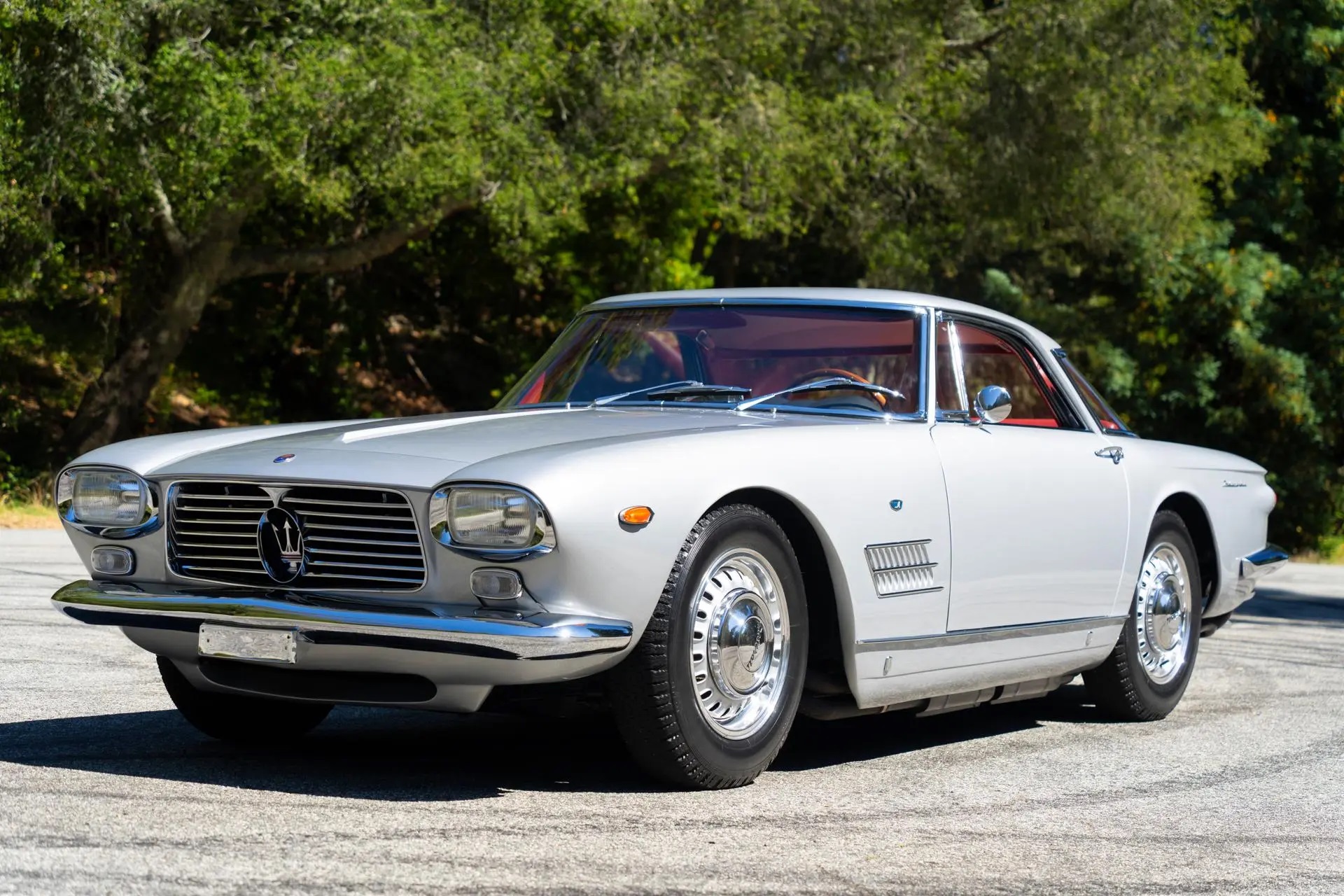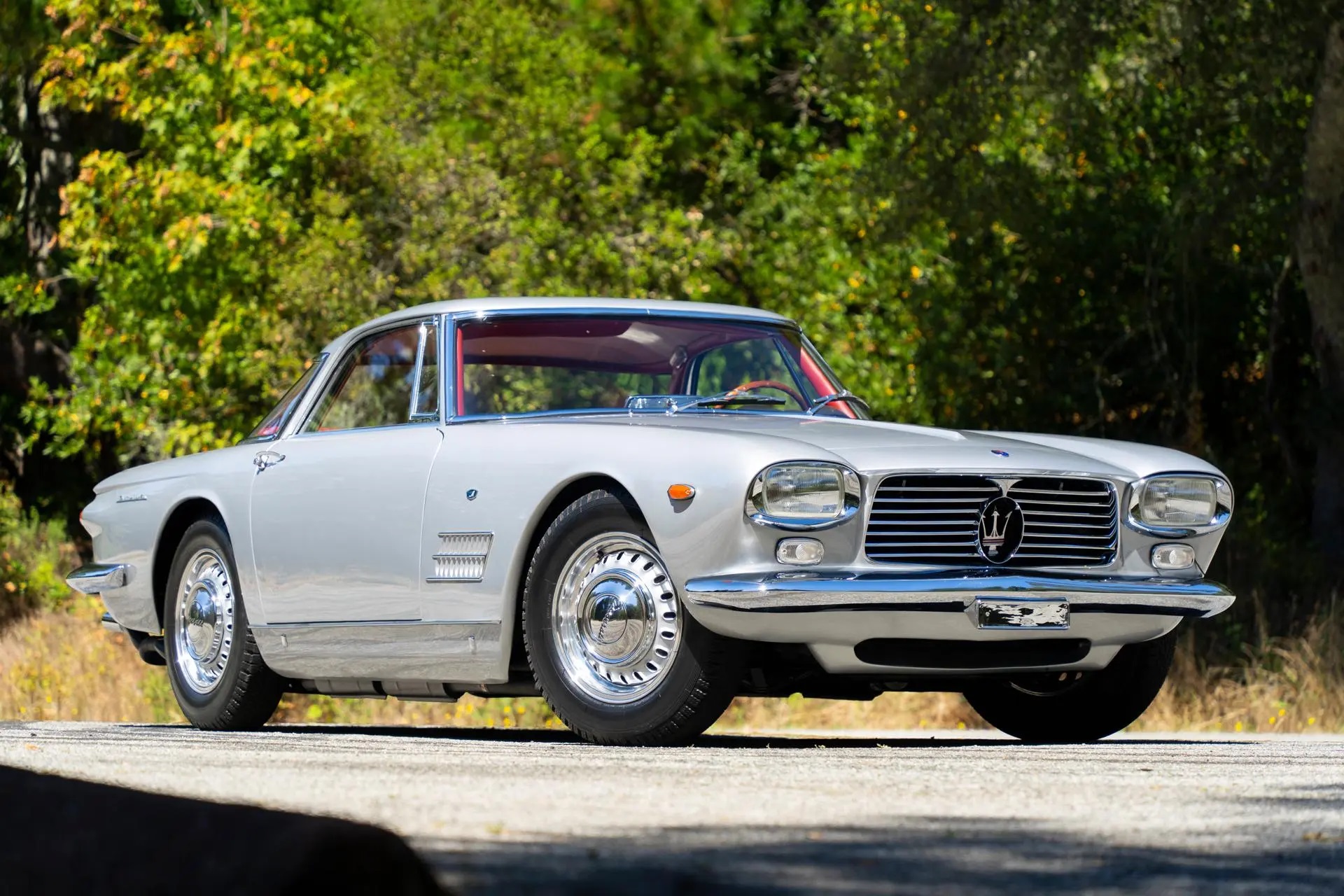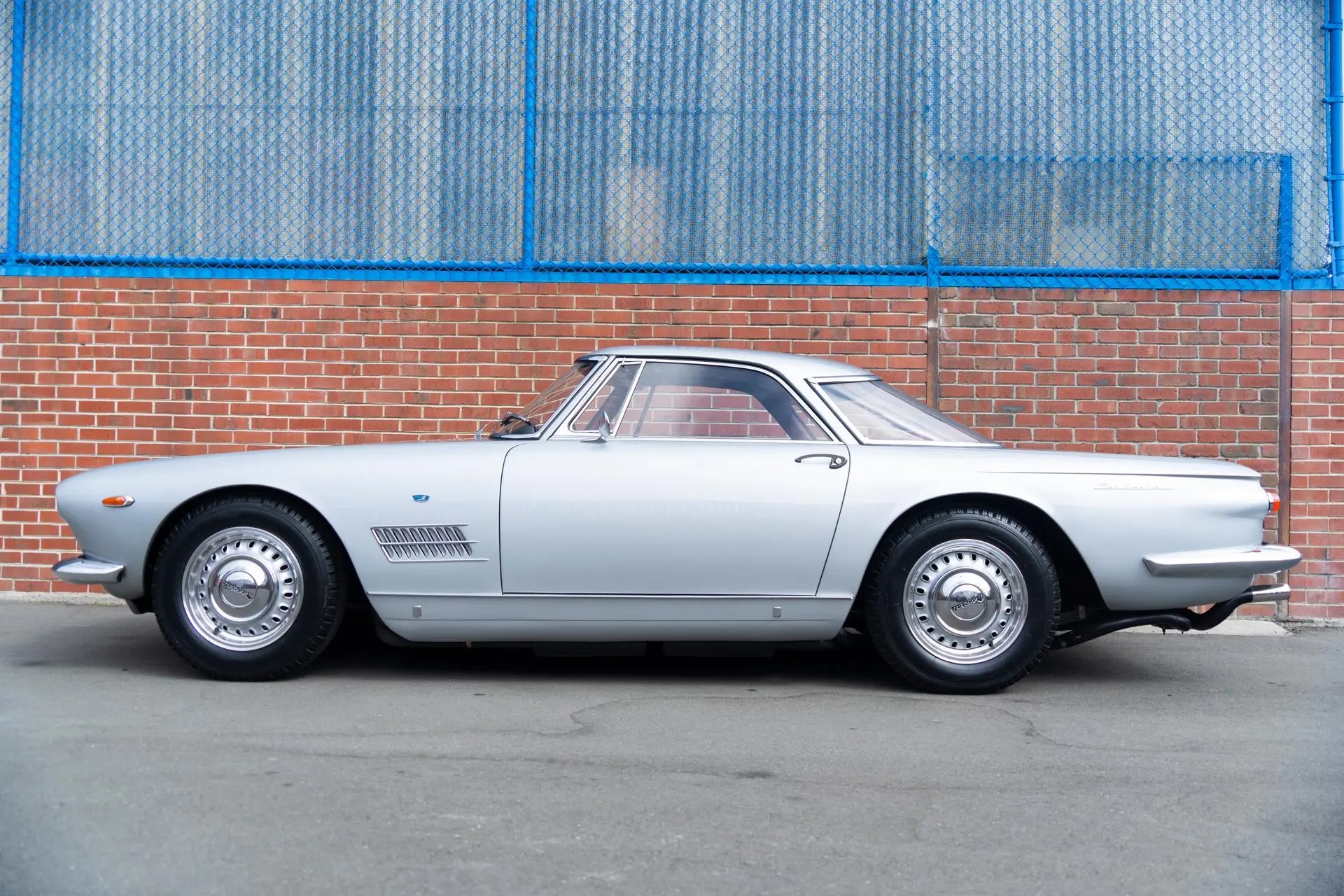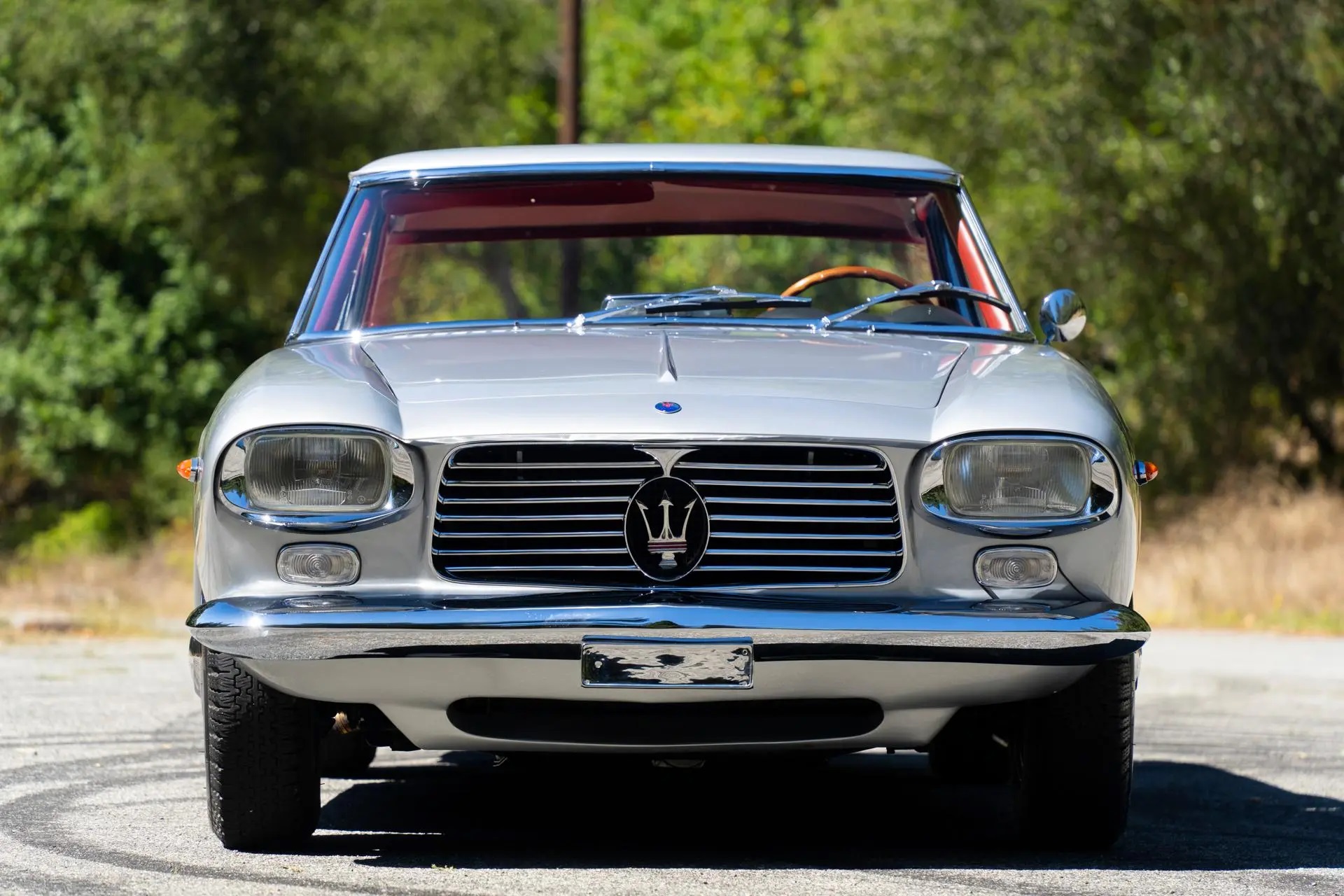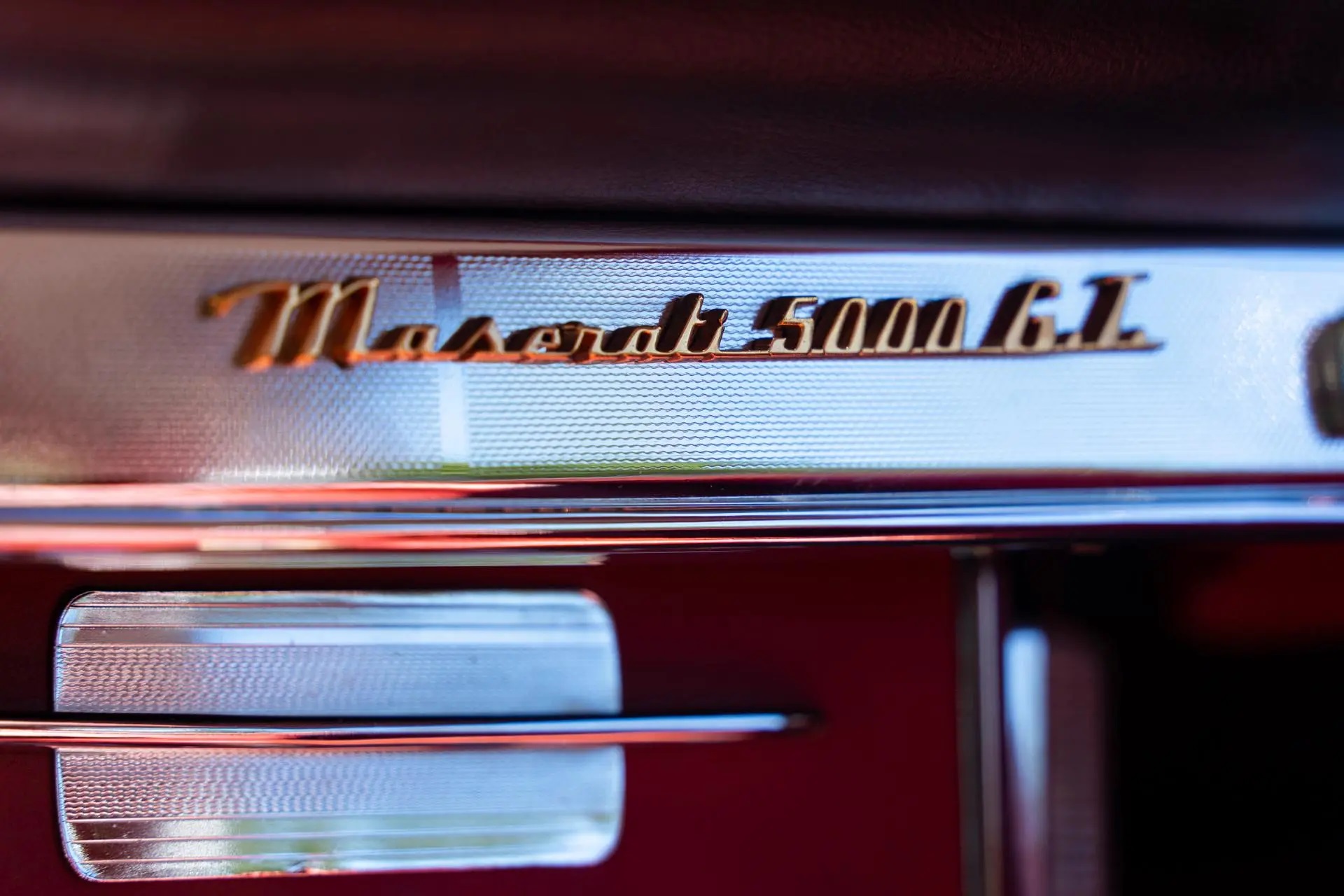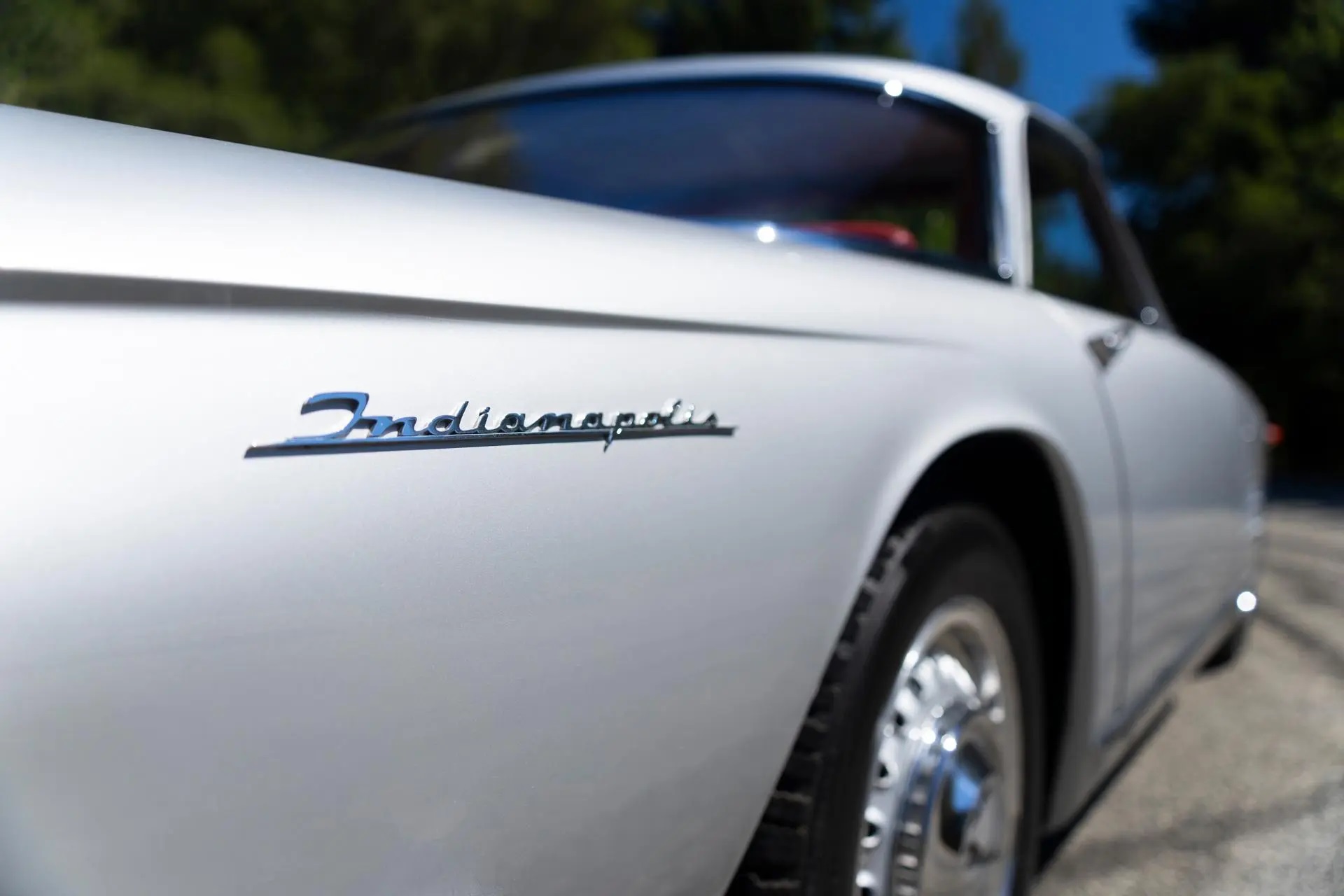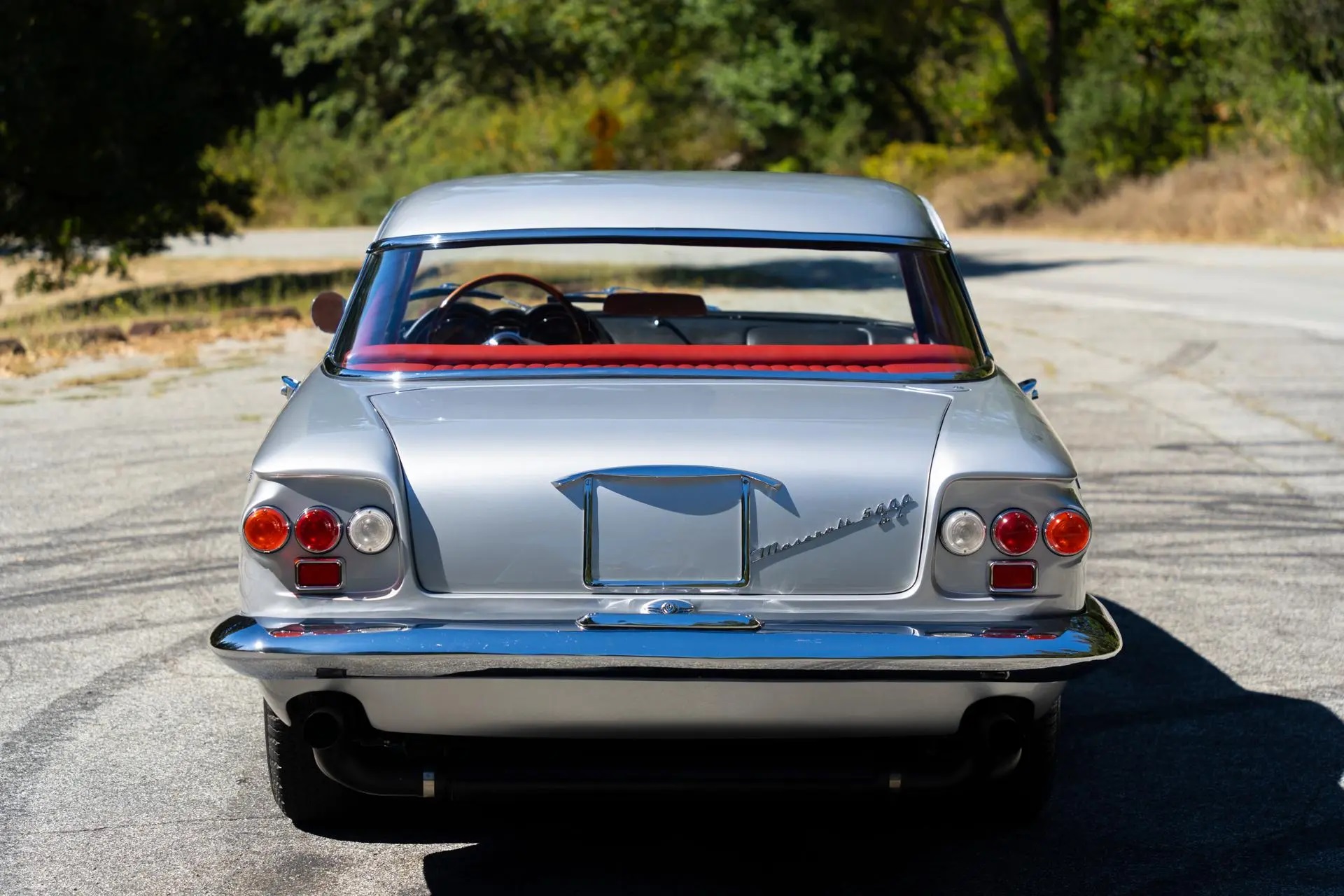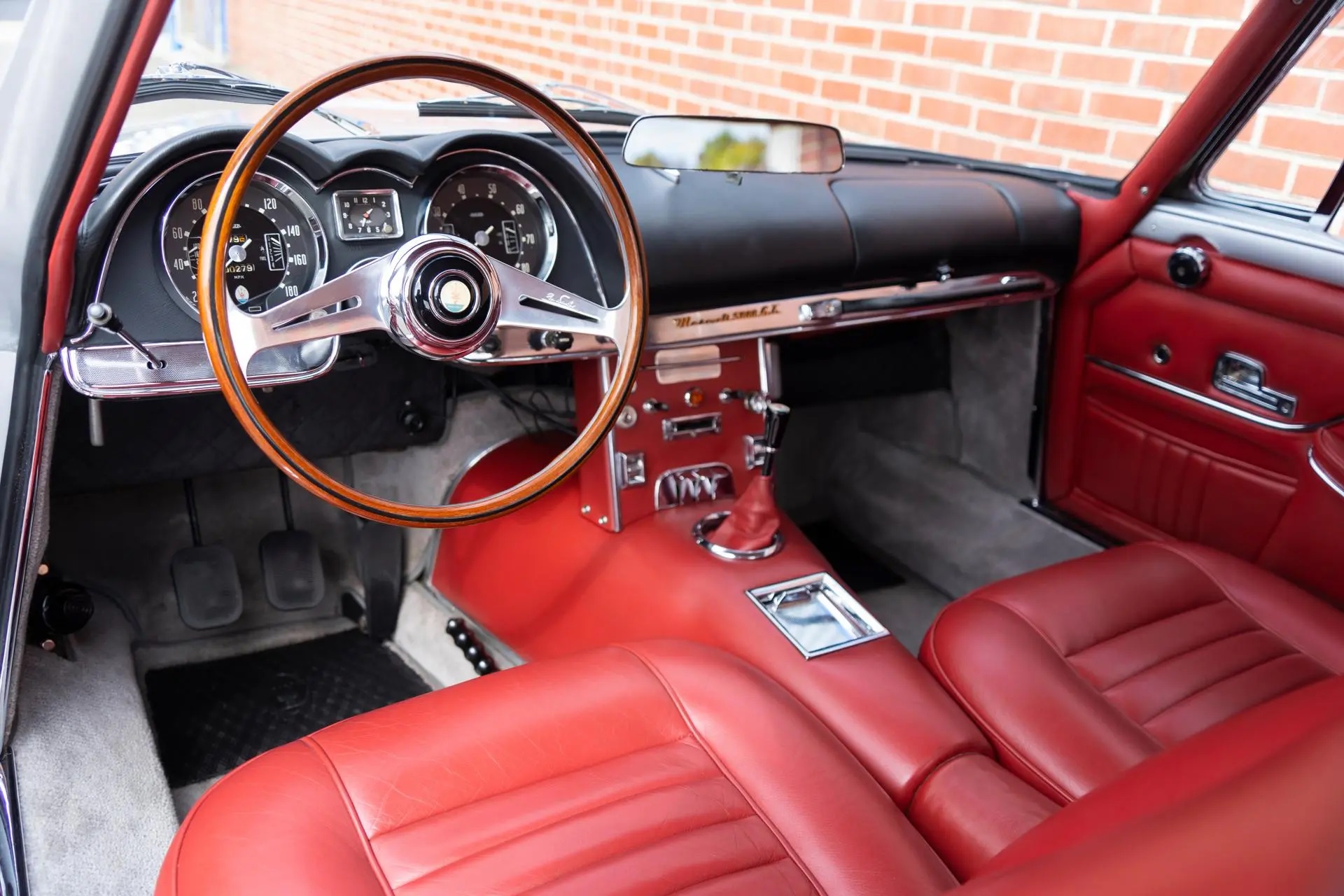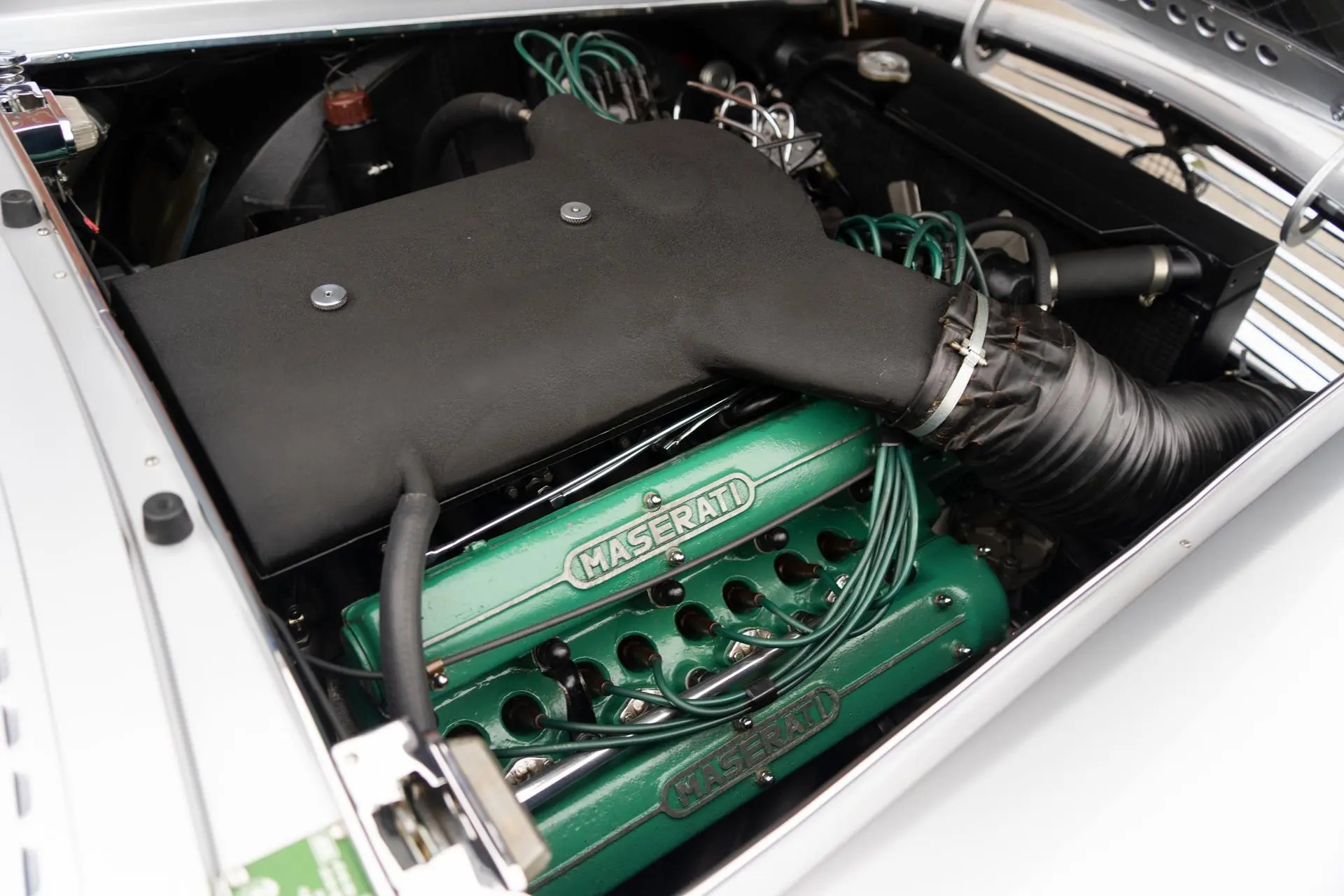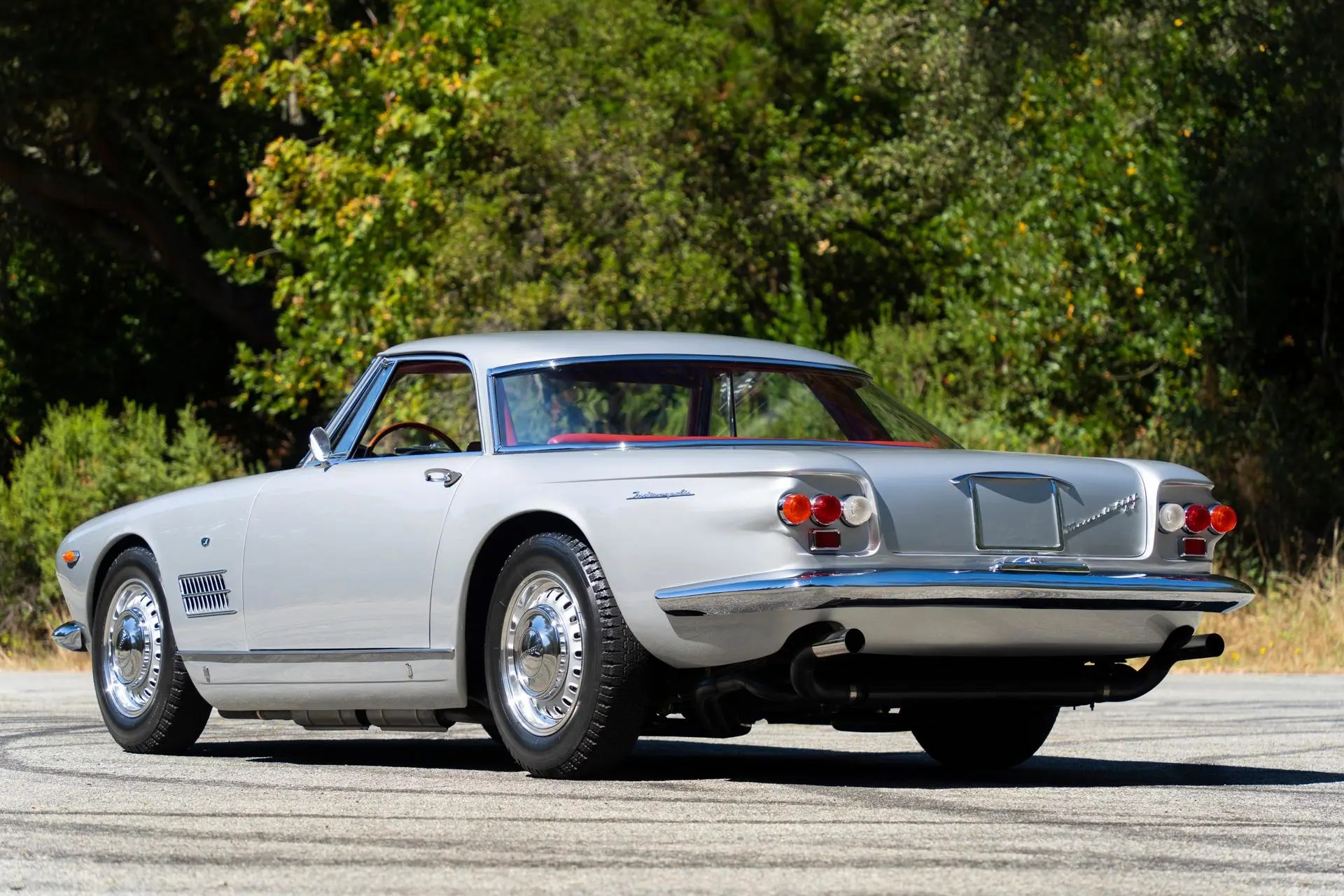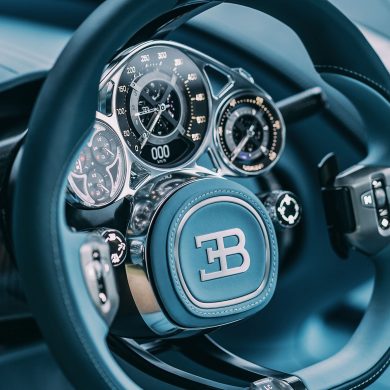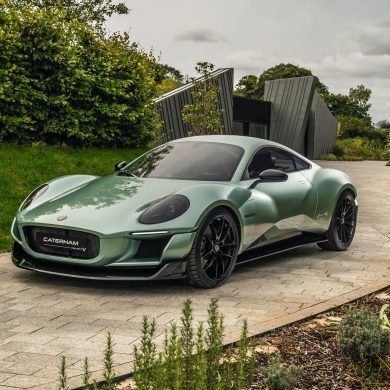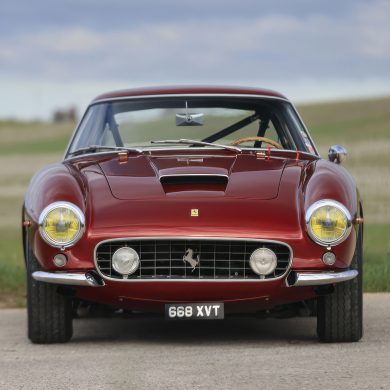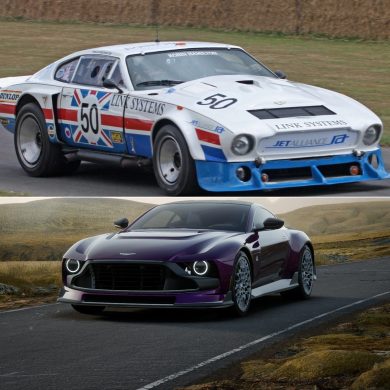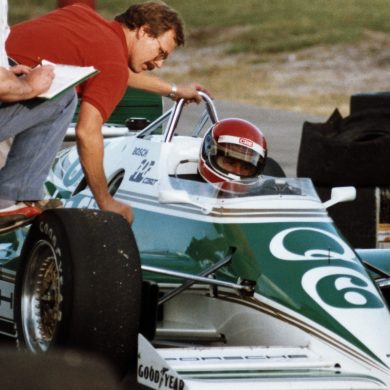The Maserati 5000 GT was presented at the 1959 Turin Motor Show and was the undisputed star of the event. Just 34 cars of this model were built at the Viale Ciro Menotti plant in Modena, with bodywork added by Italy’s top coachbuilders of the period.
Reza Pahlavi, the then Shah of Persia, and a great enthusiast of high-performance sports cars, test-drove a 3500 GT towards the end of 1958 and was delighted with it. However, he requested an increase in performance, and Giulio Alfieri, Maserati technical director at the time, realized that the car would have to be completely redesigned to satisfy this prestige customer’s demands.
The resulting AM103 project, continued through during 1959, and was in effect a new car and not merely a customization: the heart of the design was the V8 engine of the 450S (the famous Maserati racing barchetta), with its bore increased to upgrade its displacement to almost 5-liters. The 5000 GT, a prestigious 2+2 coupé, was born. The car, of which the first bodywork was built by Carrozzeria Touring, was launched at the 1959 Turin Motor Show, and received the nickname “Shah of Persia” in honor of this unique customer. Only three of that special version were ever produced.
The next year, in 1960, the 5000 GT was exhibited on the stand at the Geneva International Motor Show, with a few revisions to the engine. The most interesting fact of the Maserati 5000 GT was that it was built with bodywork by almost all the leading Italian coachbuilders of the time: from Allemano, Pininfarina, Monterosa, Ghia, Bertone and Frua, not to mention Michelotti for Vignale.
This particular 1961 Maserati 5000 GT, with chassis number 103.014, is one of the 34 examples produced between 1959 and 1966. It stands out as the first among 22 coupes built with Carrozzeria Allemano bodywork designed by Giovanni Michelotti. Named the “Indianapolis” as a tribute to Maserati’s Indy 500 heritage, this car was completed in September 1961 and featured prominently in the factory brochure for the model, as well as on the cover of Auto Italiana magazine.
The car was originally sold to an industrialist from Pittsburgh, who is believed to have taken delivery in Italy before embarking on a tour of Europe. Afterward, the car was returned to Maserati for tuning and subsequently shipped to the United States. The first owner reportedly drove it from the arrival port in New York to his ranch in Arizona, as well as on a visit to Beverly Hills, before sending it to Italy for servicing. It changed hands several times, with subsequent owners residing in Tuscany, Virginia, and eventually the UK.
In 1996, Maserati collector John F. Bookout Jr. purchased the car. In 2001, he commissioned a restoration in Italy, which included a repaint in the original Grigio Montebello color, a re-trim of the interior in red leather, and a rebuild of the 4,941cc quad-cam V8 engine. The car was subsequently showcased as part of the Maserati 100 exhibition at the Museo Enzo Ferrari in Modena, Italy. In 2016, it was acquired by its current owner, who, along with the car, won two awards at the 2017 Cavallino Classic.
This 5000 GT Allemano Coupe comes equipped with Lucas fuel injection, twin-plug ignition, a four-speed manual transmission, servo-assisted disc brakes, independent front suspension, 16″ bi-metal wheels, “Indianapolis” badging, power windows, and a two-spoke Nardi steering wheel.
Currently, this 5000 GT Allemano Coupe is available for sale via auction on Bring A Trailer. As of this writing, the highest bid stands at $550,000 with 13 days to go before the auction closes. It comes with copies of its factory shipping notice, Maserati Classiche documents, factory literature, historical photos, two Cavallino Classic trophies, and a clean Arizona title.
This Maserati 5000 GT Allemano Coupe is a beautifully restored example of one of the finest and most elegant GT cars ever produced. With its high-quality professional restoration and unique “Indianapolis” features, this exceptional vehicle is ready to impress the next owner with confident showings at premier Concours events, participation in vintage tours, and its role as the centerpiece of a top-level collection.
Source: Bring A Trailer


